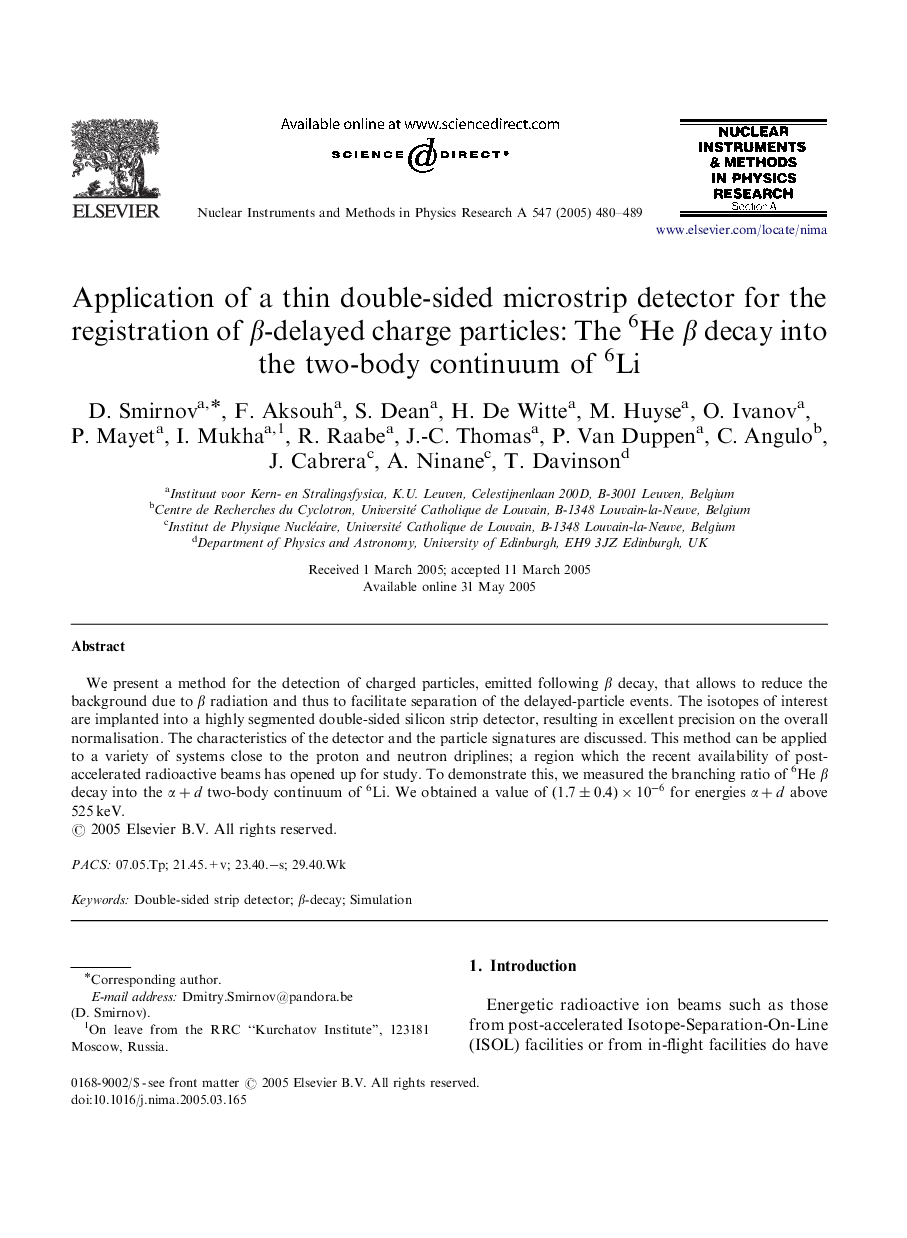| Article ID | Journal | Published Year | Pages | File Type |
|---|---|---|---|---|
| 9845287 | Nuclear Instruments and Methods in Physics Research Section A: Accelerators, Spectrometers, Detectors and Associated Equipment | 2005 | 10 Pages |
Abstract
We present a method for the detection of charged particles, emitted following β decay, that allows to reduce the background due to β radiation and thus to facilitate separation of the delayed-particle events. The isotopes of interest are implanted into a highly segmented double-sided silicon strip detector, resulting in excellent precision on the overall normalisation. The characteristics of the detector and the particle signatures are discussed. This method can be applied to a variety of systems close to the proton and neutron driplines; a region which the recent availability of post-accelerated radioactive beams has opened up for study. To demonstrate this, we measured the branching ratio of 6He β decay into the α+d two-body continuum of 6Li. We obtained a value of (1.7±0.4)Ã10-6 for energies α+d above 525 keV.
Related Topics
Physical Sciences and Engineering
Physics and Astronomy
Instrumentation
Authors
D. Smirnov, F. Aksouh, S. Dean, H. De Witte, M. Huyse, O. Ivanov, P. Mayet, I. Mukha, R. Raabe, J.-C. Thomas, P. Van Duppen, C. Angulo, J. Cabrera, A. Ninane, T. Davinson,
